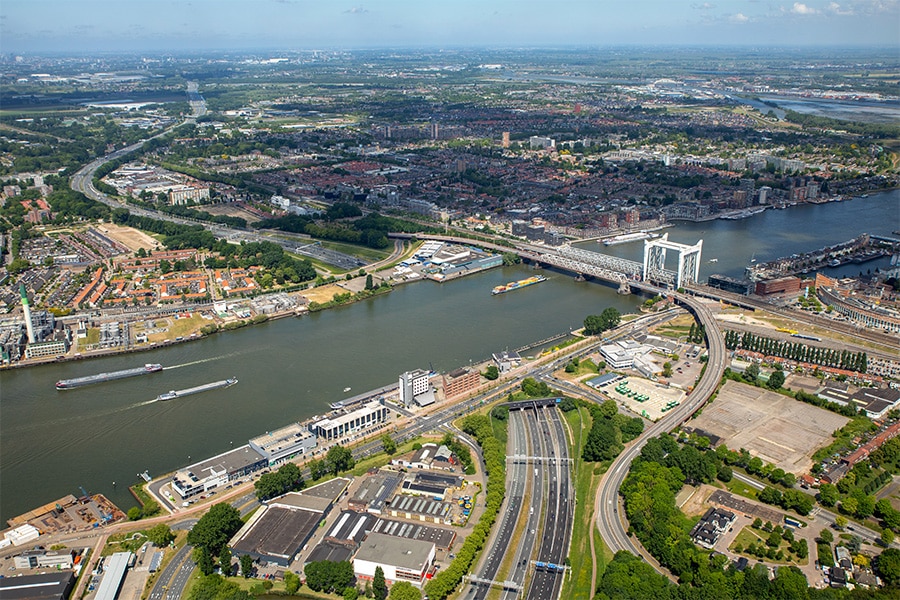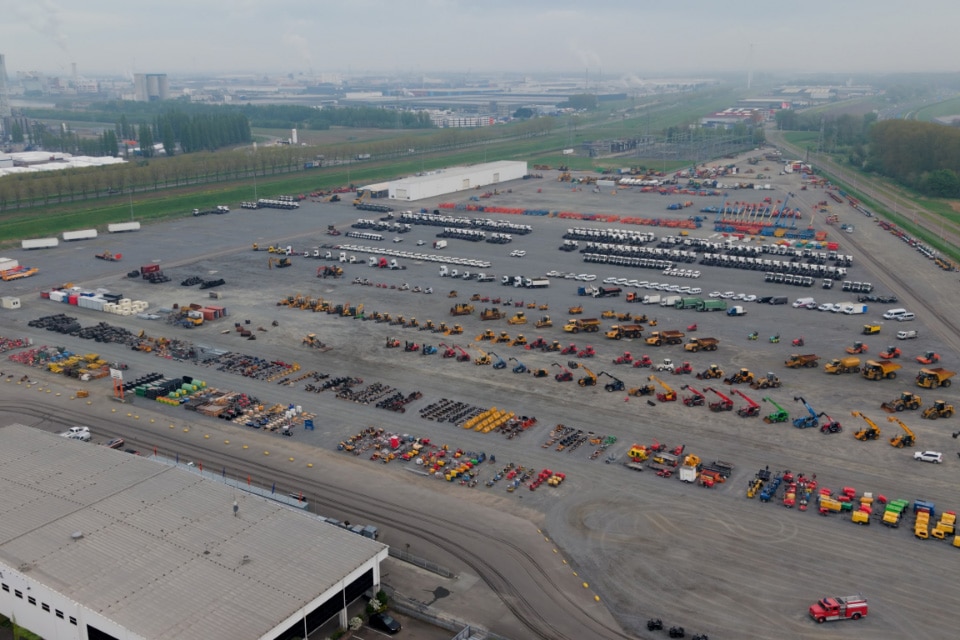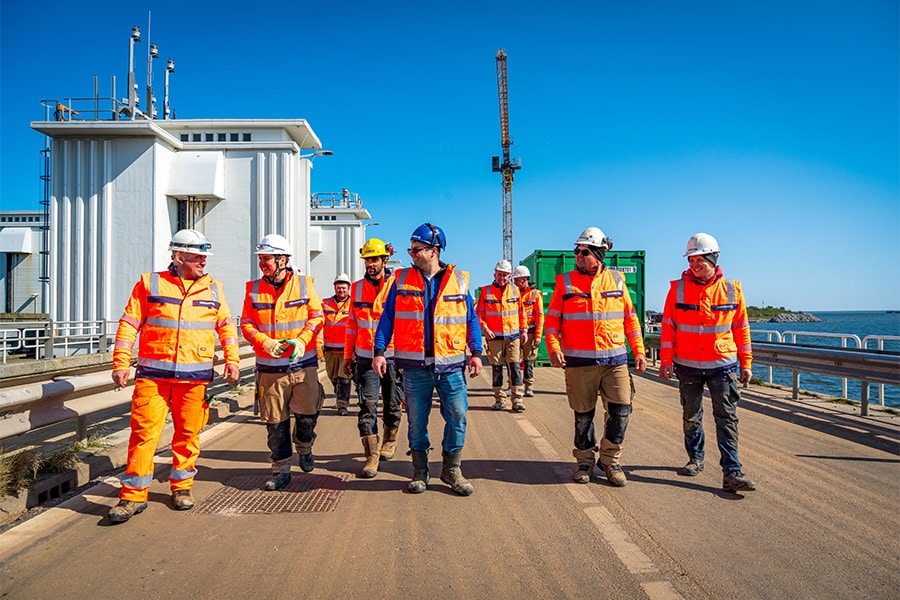
How gray concrete turns green
In ancient times, the Greeks and Romans were already working with cement mixtures that formed the basis for our current concrete. It wasn't until the 19th century that reinforced concrete was invented. So concrete is about "as old as the road to Rome. Looking at the term durability in the sense of "longevity," concrete may be called durable avant la lettre. Concrete today possesses so many good properties that we can safely talk about a durable product, which turns from gray to bright green.
"When we look at concrete as a building material, we can observe that it has optimal fluid density, it can be built without form, it has good maintenance-free properties and it is strong and robust. Add to that the fire-resistant properties and the long lifespan, then you cannot but conclude that concrete scores well in terms of durability and versatility," suggests Ron Peters, director of Betonhuis.
Concrete in relation to CO2
Peters: "Making the material and our industry more sustainable is one of the spearheads of Betonhuis." Looking at the CO2 discussion surrounding concrete production, we see that the related CO2 emissions come, on the one hand, from the material limestone, required for the production of clinker and, on the other hand, from the production process itself. Three quarters of the mass of building materials in residential and non-residential construction in our country consists of concrete. On an annual basis, the Netherlands processes between 13 and 15 million cubic meters of concrete. With such volumes, you may find concrete on the ladder of CO2 emissions, but there is a volume issue behind this. Moreover, compared to other building materials, concrete has a favorable CO2 profile. In the Netherlands, concrete contributes only 1.6% percent of CO2 emissions, and that already includes the production of cement and reinforcing steel abroad. "This share is low, but obviously it must be reduced further and eventually to zero. The European cement and concrete industry is therefore, in line with the European Green Deal, aiming for CO2-neutral cement and concrete by 2050."

Concrete in relation to circularity
Concrete is recyclable, the raw materials used are widely available and no waste is created. Structures and building components can be reused and the service life is extended. Concrete can also be recycled into aggregates. Concrete consists of cement, sand, gravel and admixture. Concrete resulting from the demolition of structures in the Netherlands can provide up to 20% replacement of gravel with concrete granulate.
Concrete protects: 'Our health is under the ground'
Betonhuis Sewerage has launched this campaign to raise awareness of the protective nature of sewers. This campaign addresses the choices involved in replacing sewers. The qualities of concrete sewers are highlighted.
"Sewerage is invisible to many people but indispensable. Drainage ensures that waste water and rainwater are disposed of safely and hygienically. Reason for Betonhuis Sewerage to start the awareness campaign 'Our health is under the ground'," explains Annemiek Houtman, sector secretary Betonhuis Sewerage.
"Sewers help prevent people from coming into contact with contaminated water, which contains bacteria and germs. Thanks to this sanitation, the average life expectancy increased significantly in the twentieth century. There are high quality requirements for sewers. After all, wastewater must be disposed of safely. Sewers made of concrete offer this guarantee. Even now the load on the sewer is increasing sharply because more and more is being discharged into it."
Sewerage also plays a role in climate adaptation. The risk of flooding, drought and heat is increasing. This poses risks to our economy, public health and safety. Torrential downpours and prolonged precipitation cause flooding, while at other times drought damage occurs. Houtman: "Permeable concrete pipes make storage, transport, infiltration or drainage of water manageable while respecting the environment through continuous control of groundwater. Concrete also protects the environment and prevents polluted water from entering streams or rivers. Raw materials for concrete are available regionally or locally, or within a reasonable distance. After the end of its service life, concrete is recycled. This is done, for example, as foundation material or as granules for making new concrete. This makes sewers made of concrete an environmentally conscious choice."

First CO2-friendly sewer pipes enter Nijmegen soil
Nijmegen is the first city in the Netherlands where sustainably produced sewer pipes are going into the ground. They were laid this week in the Pijlstaarthof. The concrete pipes are a product of De Hamer Beton from Nijmegen, also a member of Betonhuis, and contain a new binder that is much less harmful to the environment than the commonly used Portland cement. Commercial director Eric de Groot of BTE Netherlands, to which De Hamer belongs, calls the application of the more sustainable sewer pipes "a new step. De Groot: "It is our mission to minimize CO2 emissions when making concrete. We already do that by working more and more circularly and also by applying alternative binders for concrete."
That the first sustainable HaproGeo pipes will be in Nijmegen is not surprising. "When Nijmegen was Green Capital in 2018, we already did a pilot with the municipality of Nijmegen using sewer pipes that consisted of ten percent material extracted from old concrete. Making it even more sustainable is the next logical step," said De Hamer regional manager Matthijs Voschezang. "We are based in Nijmegen. Of course you want to have such a first in your own city."
Concrete also protects at gas stations
Floors at gas stations must be liquid-proof, low-maintenance and durable. "I can't think of a better material that meets these requirements better than concrete," says Arjen Blaauw of Cimitec. "Concrete helps protect our soil from the penetration of oil and fuel." As long as gasoline and diesel fuel are being tanked, liquid-tight floors at gas stations are a requirement, to prevent the fuel from disappearing into the soil. Cimintec, specializes in monolith floors for gas stations. "Before the 1990s, gas stations mainly used elements, which were poured on site with liquid-proof concrete. Nowadays, monolithic concrete floors are more often used. There is less chance of subsidence with these. However, it is important that the base, the soil under the floor, is good. It must be level. And the floor must be laid properly."
Only concrete is suitable for the construction of floors at gas stations, according to Blaauw. "The only alternative is asphalt, but that is not nearly as resistant to oil and fuel as concrete. The material is also very durable: low maintenance and it lasts a long time. In the design, we assume a lifespan of fifteen years, because that's the term that is calculated for a gas station, but the concrete itself lasts much longer."
Concrete protects
Concrete is everything and everywhere. It is part of our lives wherever we are. Without our awareness, we have surrounded ourselves with it. We rely on concrete because it is primal, safe and reliable. We build with concrete because it makes anything possible.
Concrete is both big and small. Watersheds protect our land, while profiled tiles show us the way through the streets. Water treatment plants give us clean water to drink. Meanwhile, ecoducts give badgers, pine martens and red deer the freedom to cross safely. Our economy runs on our infrastructure of roads, bridges and overpasses. At the same time, sewers protect our health for a better quality and longer life. All the while concrete protects us, it remains as we are used to. Durable and energy neutral, because concrete retains heat better than any other material. For decades wonderfully strong and proven above all else. Without much maintenance and reusable. It always finds an appearance again. Concrete is everything and everywhere for a reason.
Learn more:
www.betonbeschermt.nl



